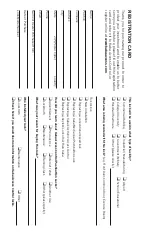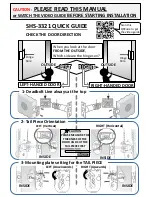
7
E-9
Before final tightening, make sure the code works and all features on the
unit work as intended.
Note
: Do not close the door until the lock has been tested and you are
confident it works properly.
E-10
Tighten the mounting screws firmly, being careful not to over tighten the
screws, as this may cause the lock to function poorly or not at all.
F. INSTALLING THE STRIKE PLATE
F-1
Push the door nearly shut to locate the center line of the latch bolt. Mark
the center line on the door frame.
F-2
Using the strike, align the center of the strike opening with the center just
marked.
Make sure to account for any weather stripping or door stop if necessary.
F-3
Carefully trace the outside profile of the strike. Also trace the latch hole in
the strike.
F-4
Using a chisel, carefully remove approximately
1
⁄
16
”
(1 mm) deep worth of material from the traced area
(already prepped on most metal doors). The latch face
plate should sit flush with the edge of the door.
F-5
Drill or cut a recess in the door frame for the latch bolt
in the center of the strike latch hole, traced earlier.
F-6
Place the strike into the newly chiseled area, making sure it sits flush and
there are no obstructions in the latch hole of the strike (remove any
obstructions or debris).
F-7
Install the strike plate with 2 screws provided.
“deadlatch”
“latchbolt”
NOTE
: The dead-latch must not fall into
the latch hole. The dead-latch protects
against manipulation of the latch bolt. If
the dead-latch is able to fall into the latch
hole, remove the strike and reposition it so
this condition does not happen.


































